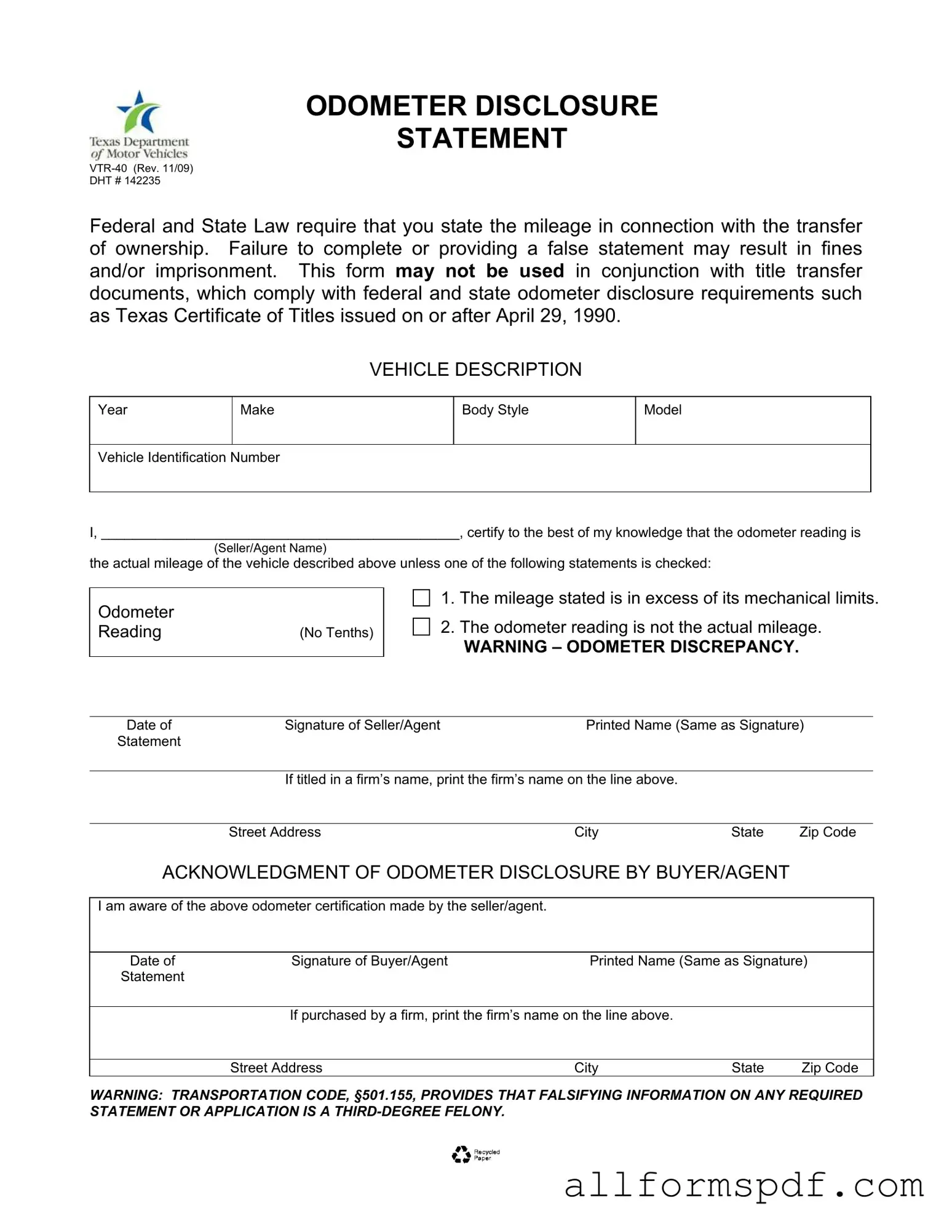Filling out the Texas Odometer Statement form can seem straightforward, but many people make common mistakes that could lead to serious issues. One frequent error is failing to provide the correct odometer reading. This number must be accurate and reflect the actual mileage of the vehicle. If it is not, you could face legal repercussions. Always double-check this figure before submitting the form.
Another mistake often made is neglecting to check the appropriate box if the odometer reading is not accurate. The form includes options for situations where the mileage exceeds mechanical limits or is otherwise not actual mileage. Failing to indicate these circumstances can raise red flags during the title transfer process.
People sometimes forget to sign the form. The seller or agent must provide a signature to certify that the information is correct. Without this signature, the form may be considered incomplete, which can delay the transfer of ownership.
In addition, it’s crucial to ensure that the printed name matches the signature. If there is a discrepancy between these two, it may lead to confusion or complications. This simple step can save you from potential headaches down the line.
Many individuals also overlook the importance of including the complete vehicle description. This includes the year, make, body style, model, and Vehicle Identification Number (VIN). Omitting any of this information can lead to issues with registration and title transfer.
Another common mistake is not providing the correct address for both the seller and the buyer. This information is essential for record-keeping and can affect the legality of the transaction. Ensure that the addresses are accurate and complete.
People sometimes fail to read the warnings included on the form. The Texas Odometer Statement clearly states the consequences of falsifying information. Ignoring these warnings can lead to serious legal ramifications, including fines or imprisonment.
Lastly, some individuals do not keep a copy of the completed form for their records. This can be important for future reference, especially if any disputes arise regarding the sale. Always retain a copy to protect yourself and ensure a smooth transaction.
